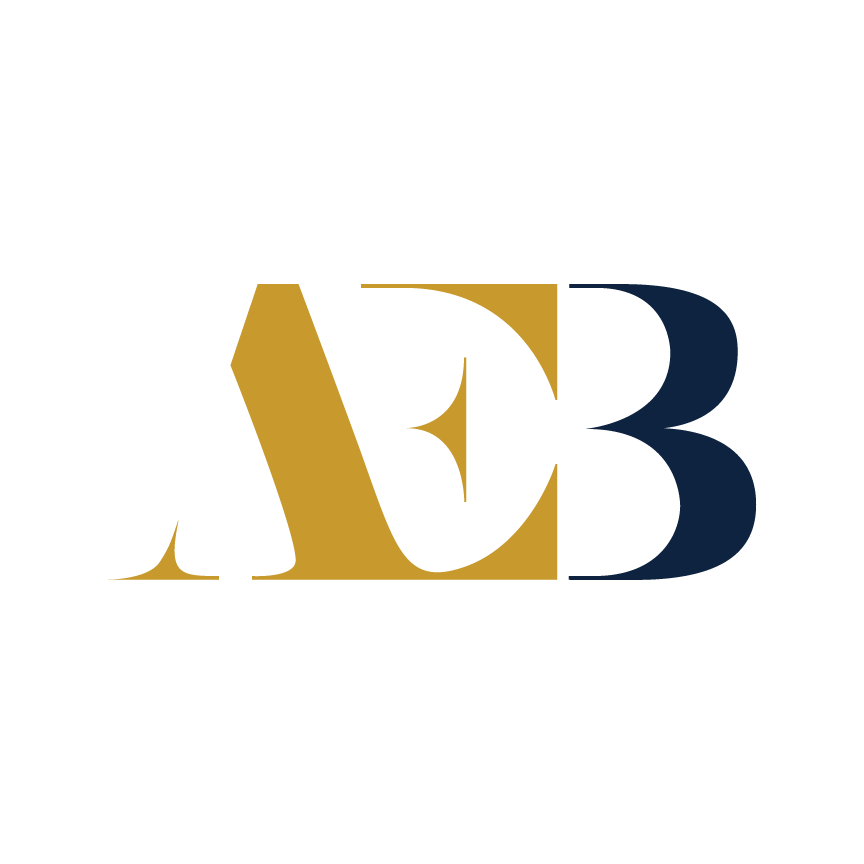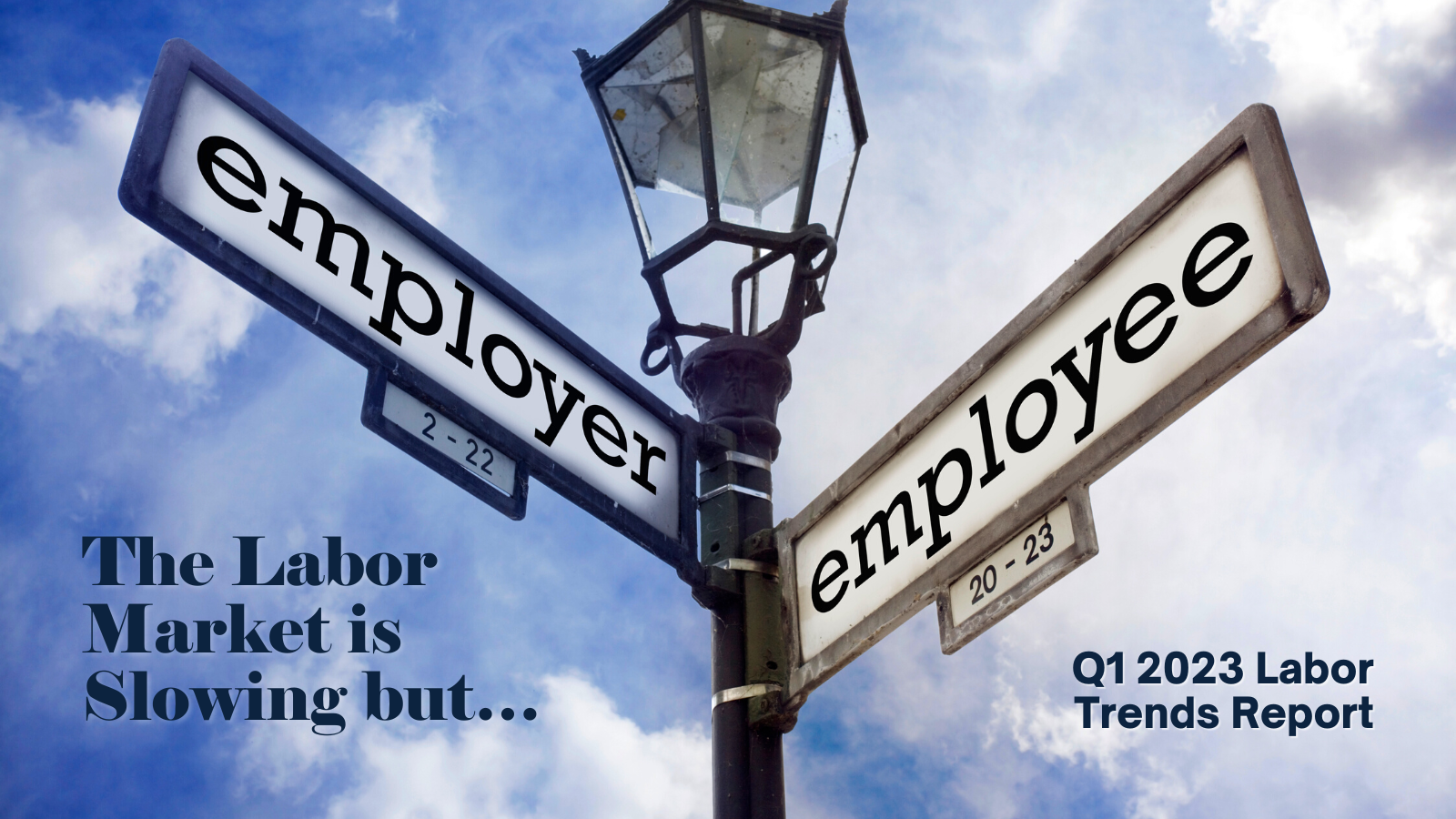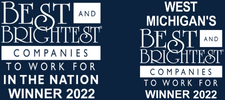Our working lives and, more broadly, the labor market have seen several changes in the past two years. And despite foreboding research and talks of an impending recession, experts suggest the labor market is, and will remain, remarkably resilient through the new year. However, this optimism doesn’t exclude some shifts in employment and workplace trends.
- Hybrid accommodations are more common than ever before — with no sign of stopping in sight.
- Workplaces will continue to diversify in turn with the growing workforce.
- More employers are looking to satisfy employee expectations to improve retention.
- Organizations will need to improve their hiring strategies for continued growth.
As economic uncertainties loom over 2023, we’re looking back at some of the employment and workplace trends we predicted, looking ahead to what might change, and examining how the top 5 trends of 2023 might shape the workplace over the next 12 months.
Looking Back at the Employment Trends We Anticipated This Year
Our predictions for the workplace trends shaping and influencing this year were very much made from the employee perspective. We anticipated remote work to be more than a flexible option but become a new norm.
In a mid-year survey, McKinsey reported that 58% of U.S. employees now have the option to work remotely on either a part or full-time basis. A Gallup poll revealed that by the end of 2022 fully remote work arrangements will have increased by 200% since 2019. However, hybrid arrangements continue to be the most common and most preferred by employees.
We also pointed out that workplace trends would reflect a shift in employee benefits that were more personalized, intentional, and relevant. Employer-offered benefits provide organizations with the opportunity to improve the employee experience and make a difference in their employees’ lives.
SHRM’s annual Employee Benefits Survey found that the ranked importance of benefits shifted drastically in 2020 as employers made pandemic-inspired adjustments. Now, these rankings have since returned to an order similar to what was seen pre-pandemic. But it remains to be said: health-related, retirement savings, and leave benefits are emerging as the top-ranked benefits employers offered.
Recognizing the intentional (and at times strategic) focus on employee development and transparent business practices were more areas we correctly anticipated.
According to the Employee Benefits Survey, the number of employers who felt professional development benefits were important grew to 65% in 2022, with 78% of organizations covering opportunities for employees to develop new skills.
We also unpleasantly anticipated a workplace trend where hiring would be more challenging for employers. Hiring organizations have faced an ongoing talent shortage. The Bureau of Labor Statistics has continued to report labor participation rates around 62% while voluntary quits have remained above 4 million since June of 2021.
Finally, we expected to see more conversations around both employees and employers developing soft skills as transparency into organizations increases. Among a long list of skills that fall into this category, we placed analytical thinking, active learning, and complex problem-solving at the top. We weren’t far off here.
Forbes pointed out that even as technology increases, how people interact and work together will become more important – especially where computers can’t replace people. They identified critical thinking, decision-making, and emotional intelligence (EQ) as the top three essential skills. (For the record, EQ skills were about halfway down our list.)
5 Workplace Trends to Prepare For in 2023
If we have learned anything from the past, it’s that there will always be events that are unexpected. Yet, this doesn’t mean progressing without foresight. Taking cues from various sources and our client base, here are the workplace trends we anticipate throughout the new year.
1. Hiring will continue to challenge organizations
Increasing talk of a recession means organizations will be hiring cautiously, which may make hiring harder. This also means that candidates will likely need to meet tighter qualifications — all of which increase the time to hire.
Coupled with rising compensation, organizations will be looking for a measurable return on their investments in human capital, especially as economic pressure mounts. Onboarding new employees will need to be more intentional so new hires can make a faster impact.
Organizations will need clearly defined hiring plans that include a full picture of the capabilities and competencies you are looking for, a robust strategy for targeting and sourcing candidates, a structured hiring process and method for interviews, and purposeful onboarding and training practices.
Creating an effective strategy to counteract disruptive workplace trends like this can be daunting for many organizations, especially those without a solid foundation in place. However, when utilizing resources like our Recruitment-as-a-Service model, hiring companies can glean insight into the recruiting process and review critical resources, resulting in higher-quality candidates in less time and for less cost.
2. The pace of hiring will continue to slow down
Economic uncertainty often leads to more prudent hiring decisions, which can slow down and draw out the hiring process. There is a delicate balance between hiring cautiously and hiring too slowly. Unfortunately, many companies fall prey to “analysis paralysis”. If your hiring process drags on for too long, your company is at risk of missing out on great talent.
As layoffs increase in some industries and talent remains open to new opportunities, hiring companies may have more candidates to consider in 2023. Having more options in candidate selection and final hires will be a welcome shift for many organizations. This is why we also anticipate the tightening labor market will start to shift the balance in favor of employers again.
That said, this is one of the employment trends to be cautious of following without clear intent. Hiring companies will need strategic hiring plans that will allow them to continue supporting business goals and growth and remain resistant to the fallacy of time. Even with more hiring options, stalling on recruitment and hiring could leave you stuck reacting to talent needs instead of proactively planning for an increase in this investment once the economy regains moment.
3. Employee turnover will remain high
Voluntary quits that reached historic highs at the end of last year have been declining, albeit slowly. While we expect these numbers to continue to trend downward, it will be some time before this employment metric returns to pre-pandemic levels. Slowing job growth, increasing layoffs, and a slow shift in power will make employees a little more cautious about impulsively quitting. However, this doesn’t mean that employee expectations and desires are changing — or that employees who are unhappy or unmotivated will remain at organizations not serving them.
Organizations will need to avoid being in a position where they need to scramble to hire talent again. This means that attention to employee retention and keeping turnover low will remain an essential component in human resource management. Low turnover has a direct correlation to an ongoing awareness of company culture, an intentional focus on employee development and appreciation, and ensuring that compensation remains competitive.
Simultaneously, businesses will need to carefully balance retaining great employees over trying to hoard their employees. This situation has been discussed more openly of late and we’re hoping doesn’t influence longer workplace trends. Talent hoarding describes situations where employee growth is limited because organizations or managers want to keep talented employees where they are. It doesn’t work and often makes employees resentful of their employers.
Instead, organizations that focus on employee learning and development will benefit not only from a more skilled workforce but better employee retention.
4. What employees want most will continue to shift
Prepandemic, employees placed a high value on working for organizations whose purpose and mission are closely aligned with their personal values. In the past couple of years, flexibility in where and how they worked became more important. Closely tied to this was a strong desire for a better balance between their professional and personal lives.
Recent surveys are showing top priorities are reshuffling again with compensation now rising to the top of these workplace trends, with work-life balance, career development, meaningful work, and company culture closely following. The pandemic initially forced employees to re-evaluate what they want from their careers and what matters most in their lives.
Now high inflation and pivotal life milestones for employees in multiple generational groups are pushing them to adjust their priorities once again. A secondary reason for the increased focus on compensation is that employees who have remained with employers throughout this period of Great Resignation are seeing colleagues and peers who made job changes increase earnings much faster.
Organizations are realizing that top talent is taking more control over their careers and being more deliberate about the organizations they want to work for. This means the ability to remain adaptive and responsive (where possible) to employee desires has become crucial to retaining top talent.
5. Age will have a greater impact and influence in the workplace
The age of an organization’s workforce will impact organizations much more than it has in the past or ever before. Organizations may now have employees who span 4 or 5 generations: Golden, Boomers, Gen X, Millennials, and Gen Z.
Once upon a time, employees would join organizations and work there for their entire careers. That is not always the case today, as many employees have taken more ownership over their career progression. A one-size-fits-all approach no longer works, because employees across your organization and each team and department will be at different points in their careers and have different perspectives, expectations, needs, strengths, and even weaknesses.
Adapting to this workplace trend means organizations will need to implement different management styles and will need to continually be thinking about the futures of their employees, and the future needs of organizations. Succession planning will need to happen across all positions to avoid knowledge and skills gaps.
This opens the door to several opportunities for organizations, including mentoring both up and down to share intuitive knowledge and experience, providing clear direction for career paths, and fostering greater diversity to create greater opportunities for professional growth. Highly engaged employees not only want to know they provide value to an organization, but they also want to be able to envision a worthwhile future.
Looking Ahead
If there is one constant in life, it is that things, people, and situations will always be changing. The mystery is in what direction and how quickly those changes will come.
The organizations that navigate the transitional tides of the labor market and new workplace trends best will have a clear hiring process as part of their business growth plans, along with a strategy on how to source and attract new talent. They are also intentional about building a strong company culture and developing the skills and knowledge of their current employees.
One final observation of thriving organizations, they remain adaptive to changes in the labor market just like they do to other factors influencing their businesses. This means being observant of the labor market and being responsive to their employees. If you haven’t already, subscribe to our quarterly newsletter that provides a summary and insights into the U.S. labor market trends and what they could mean for businesses.


.jpg)

.png)



